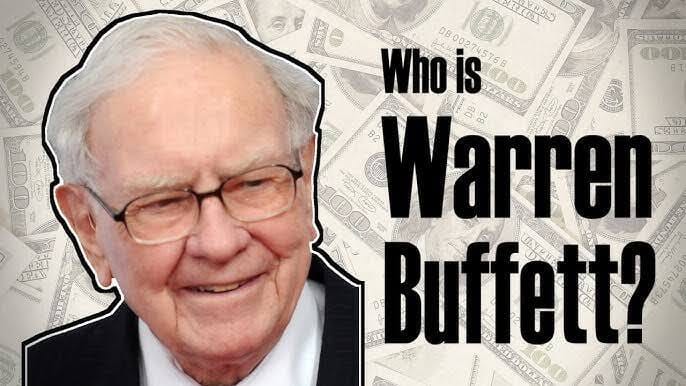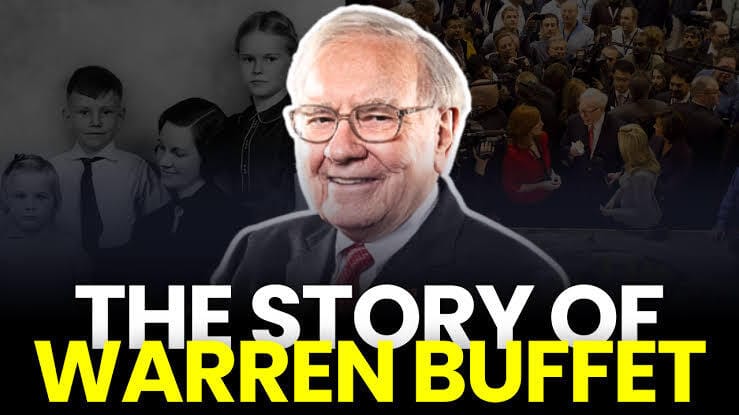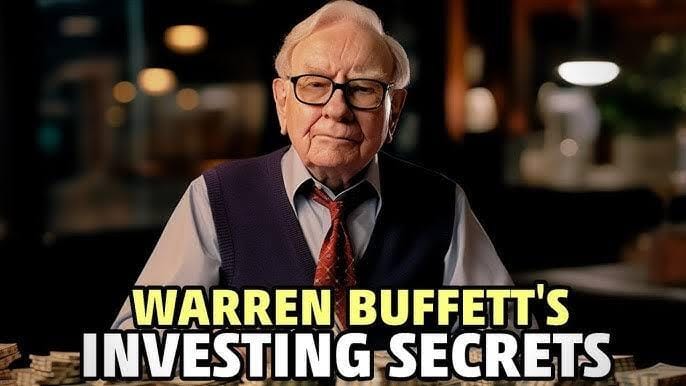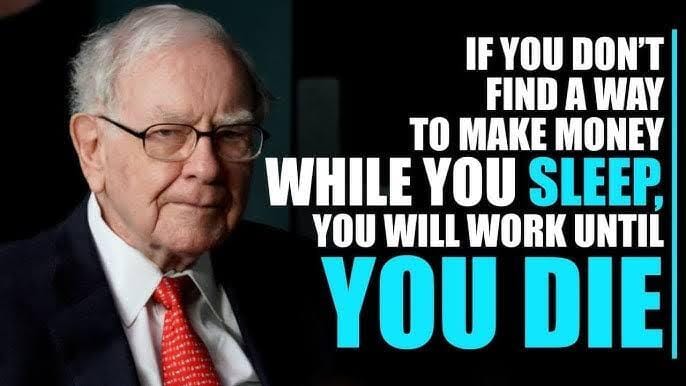- The Business Bulletin Newsletter
- Posts
- How Warren Buffet Became Successful?
How Warren Buffet Became Successful?
From $100 to $100 Billion: The Warren Buffett Playbook”

Hey there, future wealth builders!
What if I told you that the world’s most successful investor started his empire by selling packs of gum door-to-door when he was just 6 years old?
Meet Warren Buffett - a guy who turned $100 into over $100 billion by following a simple philosophy: buy good businesses at fair prices and hold them forever.
Today, we’re diving into how this regular kid from Omaha, Nebraska, became the “Oracle of Omaha” and one of the richest people on the planet. And the best part? His strategies are so simple that anyone can understand and apply them.
Ready to learn from the master? Let’s go.
Chapter 1 : The Kid Who Saw Money Everywhere
Warren Edward Buffett was born in 1930 in Omaha, Nebraska, to a middle-class family. His dad was a stockbroker and congressman, but Warren wasn’t handed success on a silver platter.
From an incredibly young age, Warren was obsessed with making money. And I mean obsessed.
At age 6, he bought 6-packs of Coca-Cola from his grandfather’s grocery store for 25 cents and sold individual bottles for 5 cents each. That’s a 20% profit margin for a first-grader.
By age 11, he was buying his first stocks - 3 shares of Cities Service preferred stock at $38 per share. When the price dropped to $27, Warren panicked like any kid would. But he held on, and when it recovered to $40, he sold.
Big mistake. The stock later hit $200. That early lesson taught Warren something crucial: patience pays better than panic.
At 13, Warren was filing tax returns and claiming his bicycle as a business expense for his paper route. This kid was thinking like a CEO while his classmates were thinking about comic books.
Chapter 2 : The College Years: Learning from the Best
Warren went to the University of Pennsylvania, then transferred to the University of Nebraska, where he graduated at age 19. But here’s where it gets interesting - he was initially rejected from Harvard Business School.
Sometimes rejection is redirection. Warren ended up at Columbia Business School, where he studied under Benjamin Graham, the father of value investing.
Graham taught Warren two life-changing concepts:
1. Mr. Market: Imagine the stock market as an emotional person who offers to buy or sell stocks every day. Sometimes he’s overly optimistic (prices too high), sometimes overly pessimistic (prices too low). The smart investor takes advantage of Mr. Market’s mood swings.
2. Margin of Safety: Only buy stocks when they’re selling for significantly less than they’re actually worth. It’s like buying a dollar for 50 cents.
These ideas became the foundation of everything Warren would do for the next 70 years.

Chapter 3 : The Early Career: Putting Theory into Practice
After graduation, Warren worked for Graham’s investment firm for two years, then returned to Omaha in 1956 to start his own investment partnership with $100 of his own money and $105,000 from family and friends.
Warren’s early strategy was pure Graham: find undervalued companies, buy them cheap, and wait for the market to recognize their true value.
His first major success came with a company called Sanborn Map. The company made detailed maps for insurance companies, but its stock was trading below the value of the investment securities it owned. Warren bought a controlling stake and unlocked that hidden value.
The results were incredible. From 1957 to 1969, Warren’s partnership averaged 29.5% annual returns while the Dow Jones averaged 7.4%. A $10,000 investment with Warren in 1957 became $150,000 by 1969.
Chapter 4 : The Berkshire Breakthrough: From Textile Company to Investment Giant
In 1965, Warren made what he later called one of his biggest mistakes - he bought a failing textile company called Berkshire Hathaway.
The textile business was terrible, but Warren had a brilliant idea: instead of trying to fix the textile operations, he’d use Berkshire as a vehicle to buy other businesses.
This became Warren’s masterpiece. Berkshire Hathaway transformed from a dying textile company into a holding company that owns pieces of the best businesses in America.
Warren’s strategy evolved from just buying cheap stocks to buying wonderful businesses at reasonable prices. Quality became more important than just getting a bargain.

Chapter 5 : The Investment Philosophy: Simple but Powerful
Warren’s approach to investing is beautifully simple:
Rule #1: Only invest in businesses you understand
Warren famously avoided tech stocks for decades because he didn’t understand the technology. He stuck to businesses like insurance, banking, and consumer goods that made sense to him.
Rule #2: Look for companies with economic moats
Warren loves businesses that have competitive advantages - like Coca-Cola’s brand power or Apple’s ecosystem - that protect them from competitors.
Rule #3: Buy when others are fearful
Warren’s best investments often came during market crashes when everyone else was panicking. “Be fearful when others are greedy, and greedy when others are fearful.”
Rule #4: Think like you’re buying the whole business
Warren doesn’t just buy stocks - he buys pieces of businesses. He asks: “Would I be happy owning this entire company for 10 years?”
Rule #5: Time is your friend with wonderful businesses
Warren’s favourite holding period is forever. He’s owned Coca-Cola stock since 1988 and has never sold a share.
Chapter 6 : The Greatest Hits: Warren’s Most Brilliant Moves
Let’s look at some of Warren’s most successful investments:
Coca-Cola (1988): Warren invested $1.3 billion when everyone thought Coke was just another mature company. Today, that investment is worth over $25 billion. The lesson? Great brands are timeless.
Apple (2016): At age 86, Warren surprised everyone by buying Apple stock. Many thought he was too old to understand tech, but Warren saw Apple as a consumer goods company with incredible customer loyalty. His $36 billion investment is now worth over $150 billion.
GEICO Insurance (1970s): Warren bought this car insurance company when it was nearly bankrupt. He saw that GEICO’s direct-sales model gave it a cost advantage over competitors. Today, GEICO is worth over $50 billion.
American Express (1960s): When AmEx faced a scandal that crashed its stock price, Warren saw that the underlying business was still strong. He bought heavily and made enormous profits as the company recovered.
Each of these investments followed Warren’s philosophy: buy quality businesses when they’re temporarily out of favor.

Chapter 7 : The Compound Magic: How Time Creates Wealth
Here’s the most important thing about Warren’s success: it’s not just about picking good stocks - it’s about letting compound interest work its magic over decades.
Warren made 99% of his wealth after age 50. Think about that. His first million took decades, but compound growth accelerated his wealth exponentially.
A $10,000 investment in Berkshire Hathaway in 1965 would be worth over $300 million today. That’s a 20% annual return for nearly 60 years.
The lesson? Start investing as early as possible and never stop. Time is the most powerful force in wealth building.
The Simple Life: Lessons Beyond Money
What makes Warren unique isn’t just his investing success - it’s how he lives his life.
Warren still lives in the same house he bought in 1958 for $31,500. He drives modest cars, eats at McDonald’s, and drinks Cherry Coke every day. He’s worth over $100 billion but lives like a comfortable middle-class person.
Why? Because Warren learned early that happiness doesn’t come from spending money - it comes from doing what you love with people you care about.
Warren genuinely loves investing and business. He reads 500+ pages every day, still goes to the office at age 93, and treats every annual Berkshire meeting like a fun family gathering.
Chapter 8 : What Every Entrepreneur Can Learn
Warren’s journey offers incredible lessons for anyone building wealth: